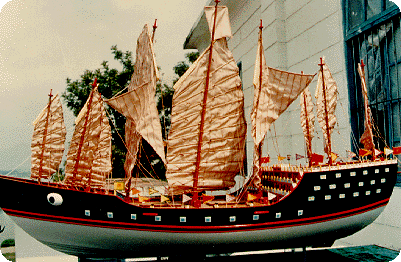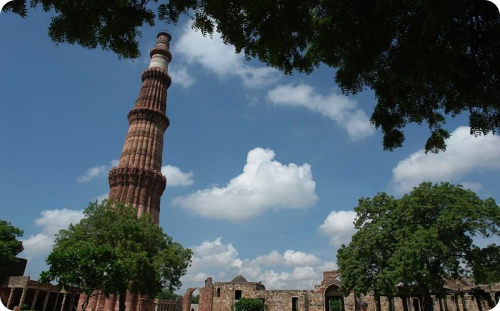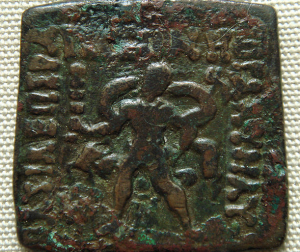 |
| Chinese treasure ship (via Wikipedia) |
In 1498, three ships — Sao Gabriel, Sao Rafael, and Sao Miguel — appeared in Calicut heralding a new era in geopolitics and world trade. Vasco da Gama would become immortal for finding a route from Europe to India, avoiding the Muslims who had a monopoly on overland trade. But for the residents of Calicut, this was not a major event. They were used to foreign traders and many foreigners lived in the Malabar coast. Even da Gama’s ships and crew of less than two hundred people was not a jaw dropper since they had seen huge Chinese ships with larger crew in Calicut port.
Much before Europeans became major players in the Indian Ocean, traders routinely sailed from the Malabar coast to the Swahili coast. During that time the Chinese built the biggest ships of the era and under Admiral Zheng He (pronounced Jung Huh) made seven voyages reaching as far as the Swahili coast. With such technology, the Chinese could have dominated trade, instead of the Europeans, but they did not. It is interesting to see why.
Ming and Zheng He
This story begins on September 10, 1368 when Ukhaantu Khan of the Yuan dynasty fled to Inner Mongolia unable to face the rebels under the leadership of Zhu Yuanzhang. These rebels would establish the native Ming dynasty. The third Ming emperor Zhu Di, wanted to improve trade, enhance the empire’s prestige, and encourage a tribute system for which he ordered an armada to be built.
Zhu Di’s admiral for the mission was Zheng He, a six and half feet tall two hundred pound man. This 34 year old Muslim originally named Ma Ho, was captured as a child by the Ming army from the Mongol village of Yunan. Like the Egyptian Mamluks, these slaves had career paths, but only after castration and so Zheng He eventually became the Grand Eunuch.
Even before the Ming dynasty, huge Chinese ships were spotted in Kerala. In 1340, Ibn Battuta, who was in Calicut, saw 13 Chinese junks wintering in the port. Ibn Battuta who had traveled in various type of ships and dhows in his travels from Morocco to India never mentioned much construction details in his accounts, but the Chinese ships impressed him so much that he wrote about three types of ships — the large junks, middle sized zaws, and small kakams. Ibn Battuta also expressed happiness at the privacy offered in their cabins that he could take his slave girls and wives and no one on board would know about it.
In 1330, Jordan Catalani, a Dominican monk saw them in Quilon and wrote that they had over 100 cabins and 10 sails. They were triple keeled and held together not by nails or metal structures, but the thread of some plant. Ibn Battuta wrote that these ships carried thousand men of which four hundred were soldiers.
Zhu Di’s ships, under the command of Zheng He sailed in 1405. There were 317 ships of which 60 were the large junks. These treasure ships held lacquers, porcelain, and silks. They carried a total of 27,000 men which included soldiers, carpenters, physicians, astrologers, cartographers and interpreters. Columbus, Vasco da Gama, Magellan or Francis Drake would never command such a fleet nor as many men.
Under his leadership, the fleet made seven voyages trading, transporting ambassadors and establishing Chinese colonies. Three of those were to India, one to the Persian Gulf and three to the Swahili Coast and in the process he visited the Champa kingdom, Cambodia, Sumatra, Nicobar Islands, Ceylon, Maldives. One item which Zheng He took back to China was a giraffe; how the giraffe was transported on a ship passing through a rough ocean is not documented well, but it certainly amused the king. So did zebras which were called celestial
horses.
They called Calicut, “a great country” and people as “honest and trustworthy”. They had good opinion of the Zamorin and observed that Calicut had a highly structured society, well trained army and a harsh system of justice. In Calicut they traded using the language of the fingers.
(Read Part 2)



